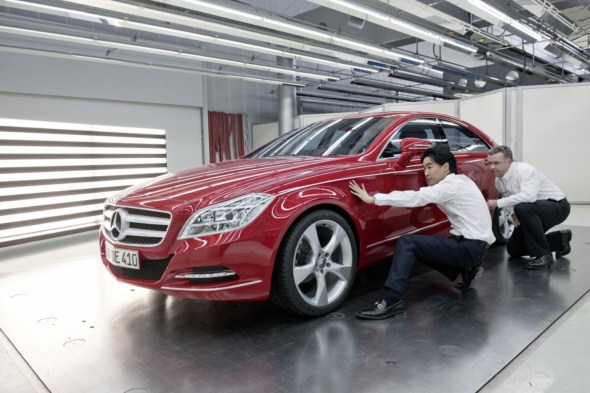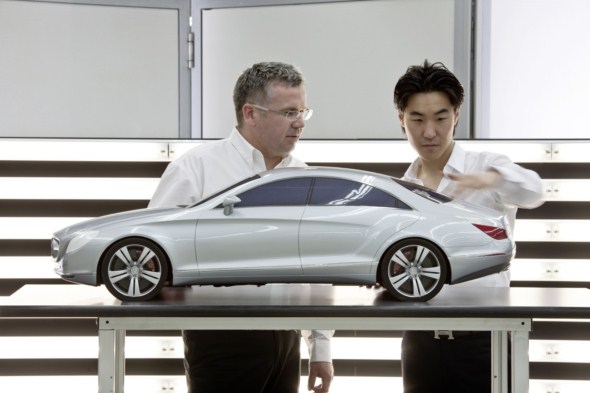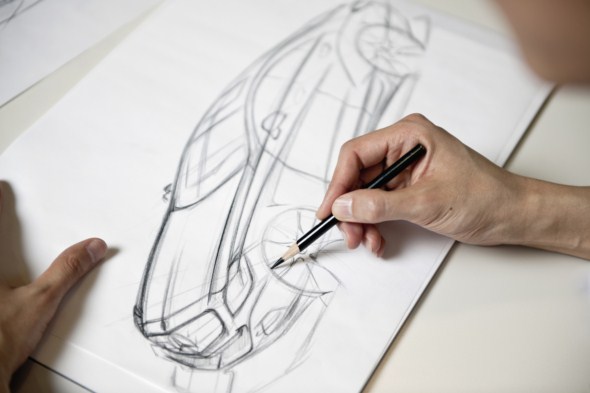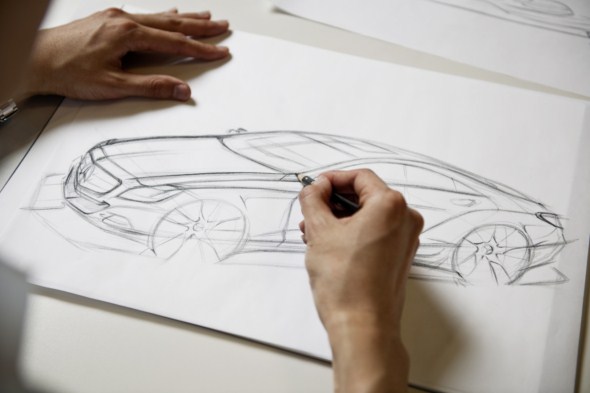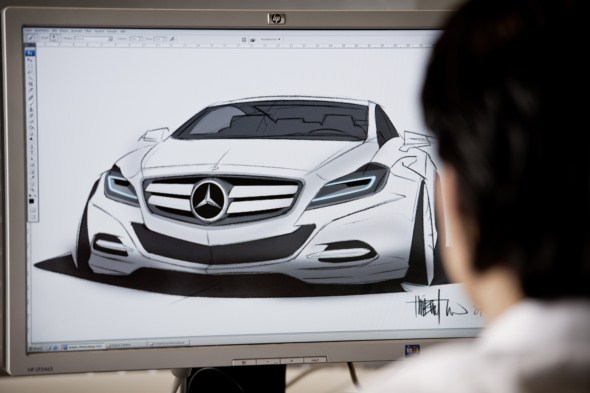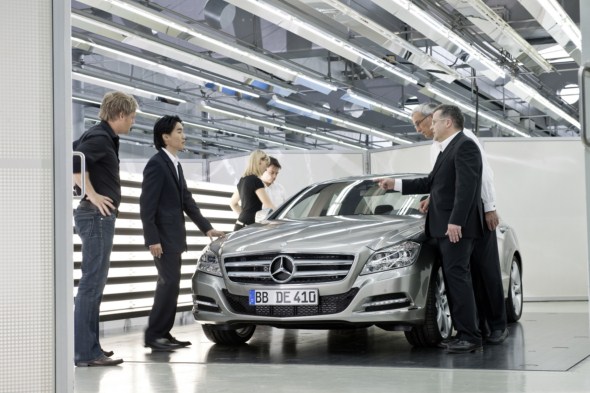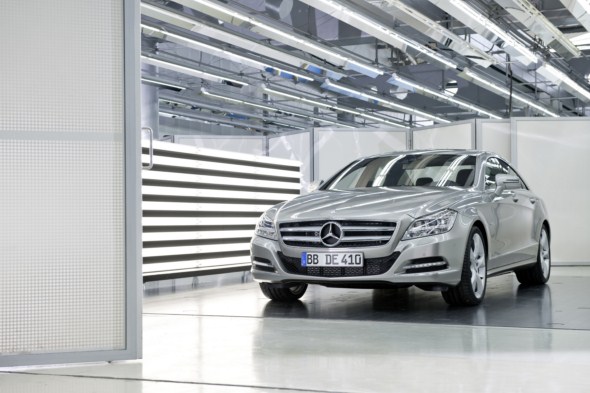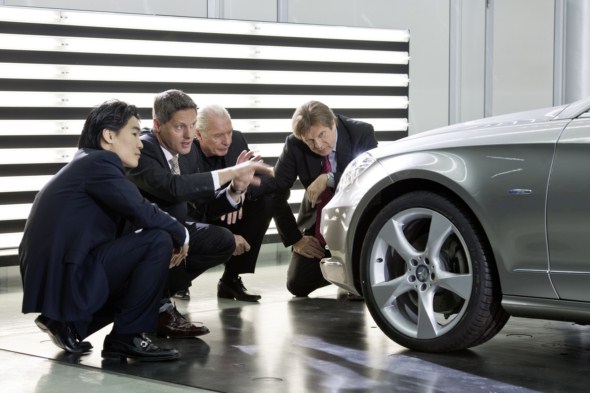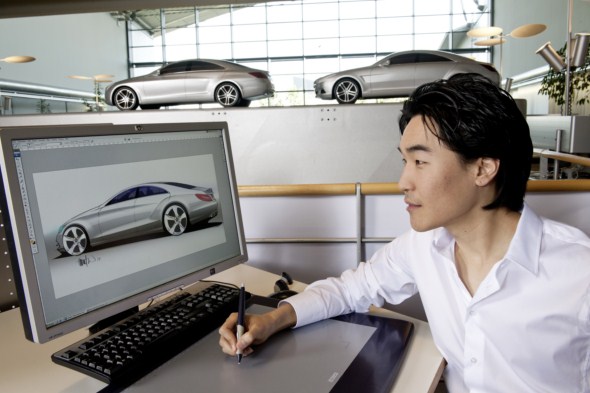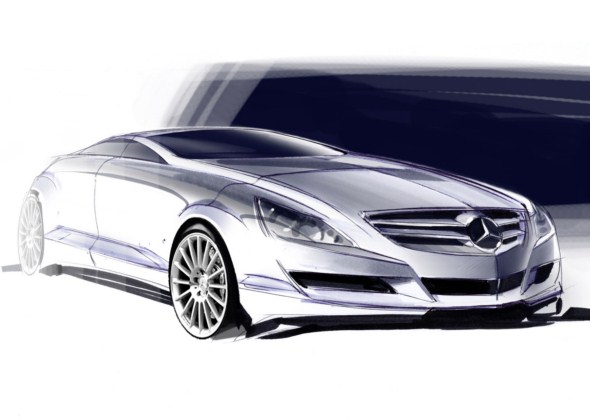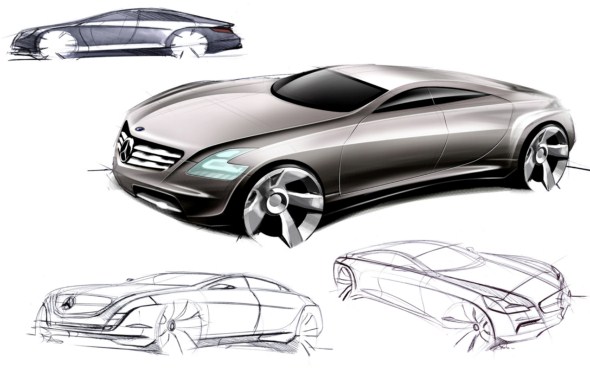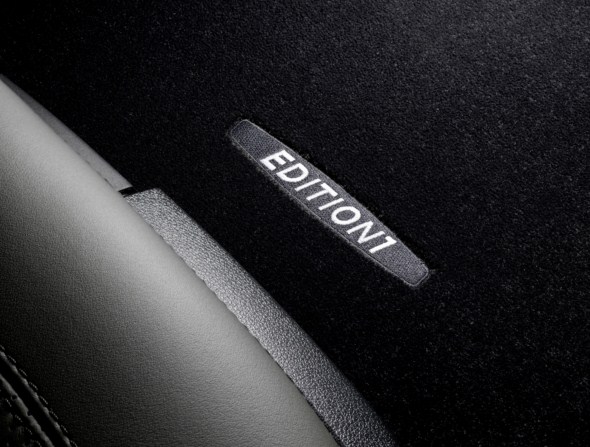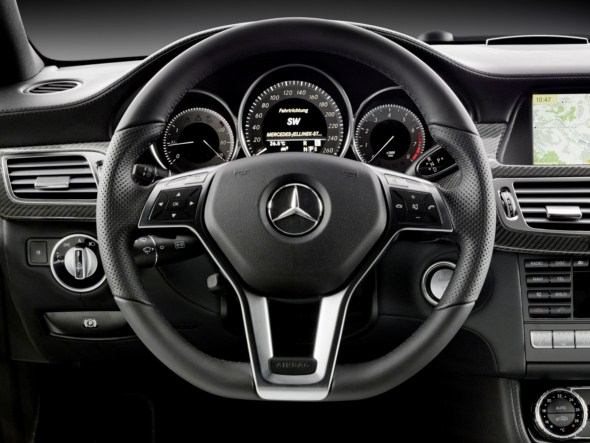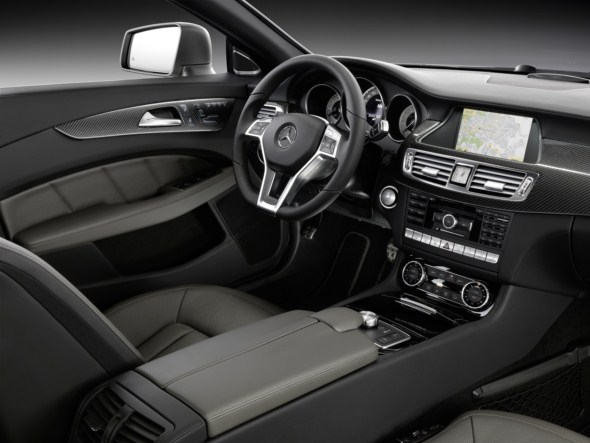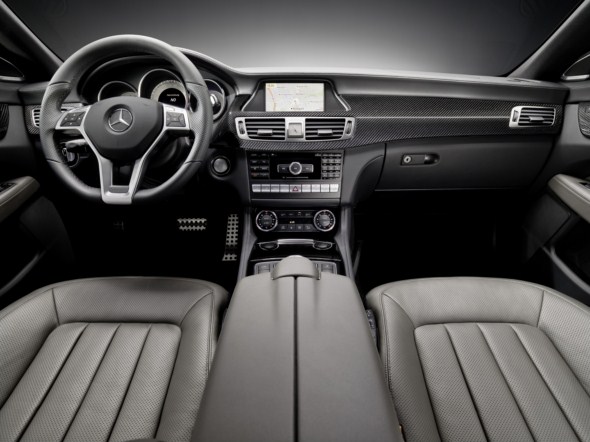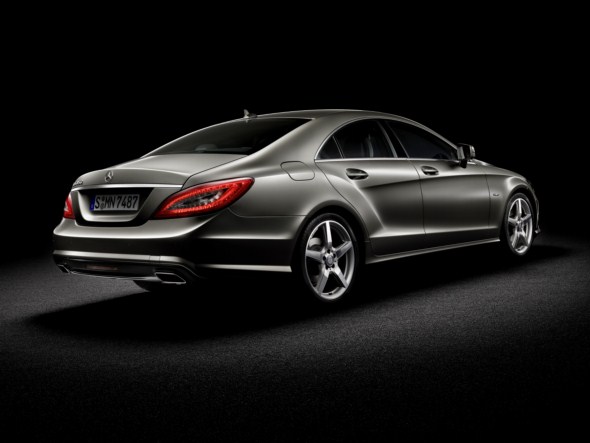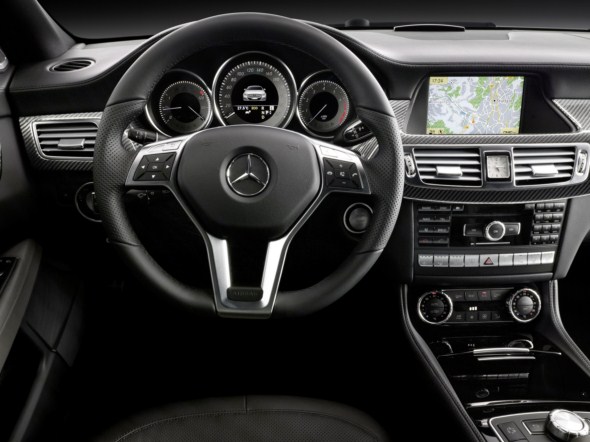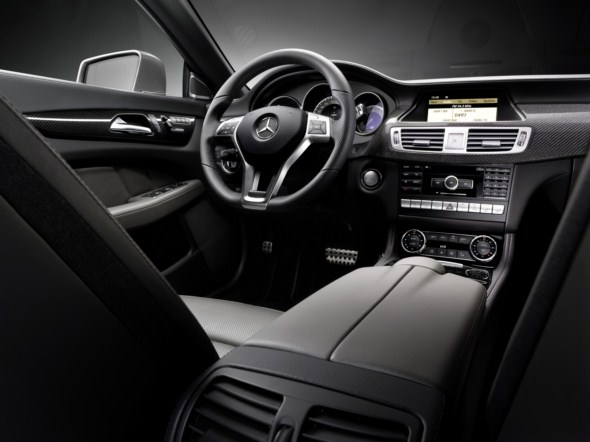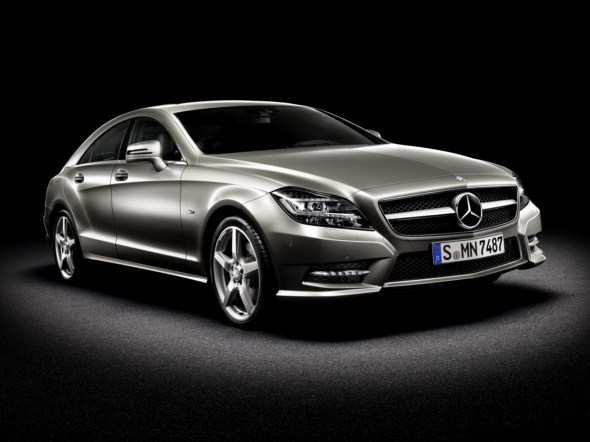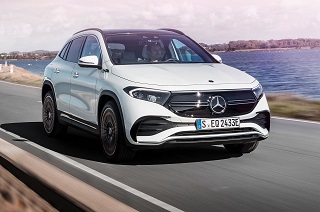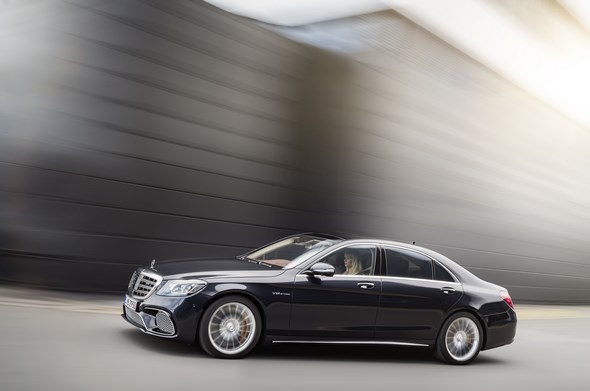
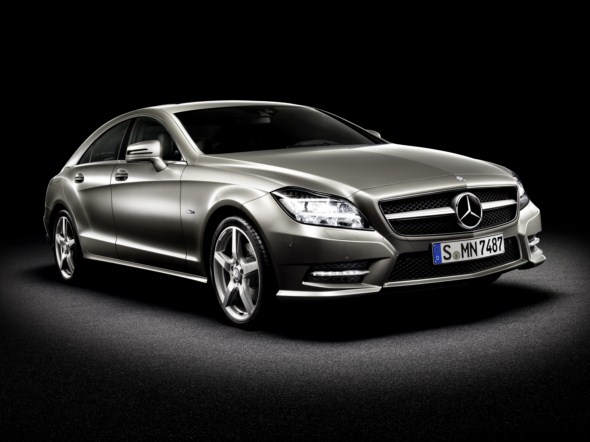
The new CLS – the new design icon from Mercedes-Benz
- The CLS brings refined sportiness to life
- Visualisation of the Mercedes-Benz brand values
- Athletic proportions, perceptible design idiom
- Expressive front design features central star in the grille
- Dynamic, feature line flowing back towards the rear
- Elegance with handcrafted details in the interior
A generation ahead: with the CLS, Mercedes-Benz created a new vehicle category in 2003 which for the first time combined the elegance and dynamism of a coupé with the comfort and functionality of a saloon. The public were delighted, the competition astounded and a style icon was born: for years the CLS has endured as the only four-door coupé in its class, and since October 2004 it has been the car of choice for around 170,000 buyers worldwide.
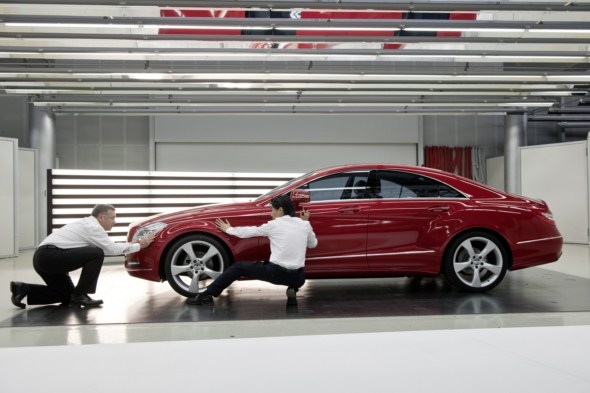
“Customers all over the world benefited from our bold move to launch a completely new vehicle concept onto the market”, explains a delighted Dr. Joachim Schmidt, member of the board of Mercedes-Benz Cars, Sales & Marketing. “And with its exciting design, the new edition of the CLS also benefits from the fact that we are a whole generation ahead of the competition with our four-door Coupé.”
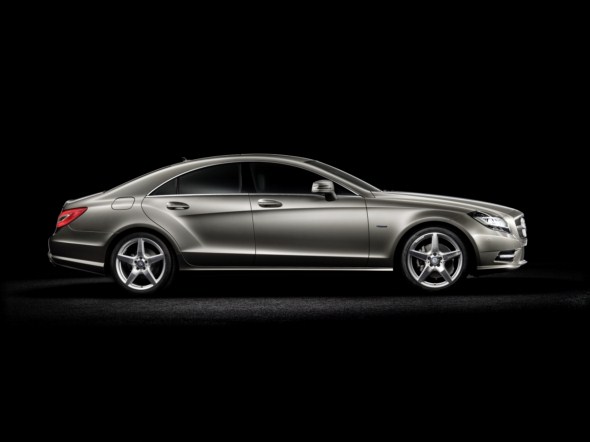
Celebrating its world premiere at the Paris motor show (2 – 17 October 2010), the new CLS builds on the pioneering role of its predecessor yet at the same time is an entirely new edition. “The new CLS points the way forward for the future perceptible design idiom of Mercedes-Benz”, explains Professor Gorden Wagener, head of design at Mercedes-Benz. “At the same time it takes its inspiration from the great tradition of stylish, refined sportiness which has always been a feature of Mercedes coupés.”
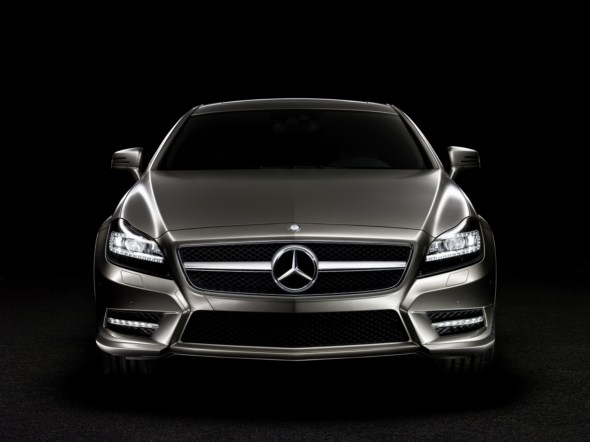
Exterior: classic Coupé styling with distinctive front

The proportions remain as spectacular as ever: long bonnet, narrow-look windows with frameless side windows, dynamic roof sweeping back at an angle towards the rear. The four-door coupé from Mercedes-Benz immediately made its mark in 2003 as a new style icon. Now the proportions are the same – and yet everything is different: the second generation of this design trendsetter has adopted a completely new look.
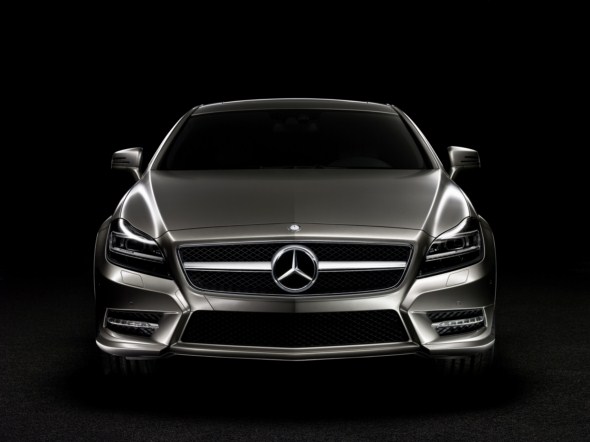
What immediately strikes the eye is the innovative front design, which is reminiscent of the Mercedes-Benz SLS AMG. Visually, the radiator grille is not integrated into the bonnet but is formed separately. This highlights the long, sporty bonnet even further. The grille is dominated by the large central star, which underlines the car’s relationship to the other coupés of the brand and also enhances brand identity. The large, elongated dark air inlets with black grilles also add to the vehicle’s athletic appearance.
Design brings high-tech features to life

Another distinguishing feature comes in the form of the full LED headlamps, which are the world’s first to offer all of the regular dynamic light functions using LED technology. This innovation boasts an impressive design – inside they are divided into three arrow-shaped layers from top to bottom: the upper layer contains an LED indicator, beneath which is a striking LED side light offering low beam functions.
The side light can also be seen when the dipped beam function is switched on, thereby creating a novel and separate night-time design and distinctive look. The lowest level of the headlamp houses the main beam and nightview functions. A total of 71 LEDs not only provide an unmistakable appearance, but also a significantly enhanced view of the road compared with previous systems.
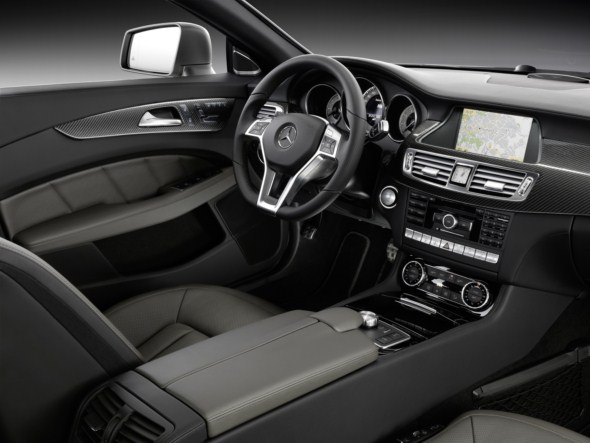
The typical CLS outline, with its elegantly long proportions, is the dominating attribute of the new model. The effect of the dynamic, athletic form has been enhanced with a new interplay of lines and areas. The front edge of the structure, above the mudguards, which slopes off towards the rear – known as the dropping line by designers – is not only a novel design feature but also represents a new interpretation of a formal design element harking back to the uniquely rich wealth of forms present in historic Mercedes sports cars.
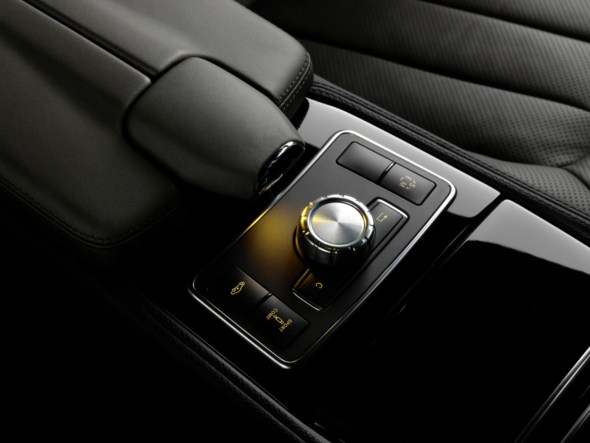
A distinctive and muscular sports car-like shoulder line above the rear axle highlights the athletic character of the new CLS. The flared wheel arches resemble the powerful thighs of a feline predator waiting to pounce.
The side view is rounded off with wide wrap-around tail lights featuring LED technology which are arranged in the form of a linking element to the rear of the vehicle. The shape is emphasized by the broad shoulder line, which is clearly visible from behind and supports the flat hardtop. A wide metal insert adds a further visual highlight at the rear.
The interior: design brings quality to life
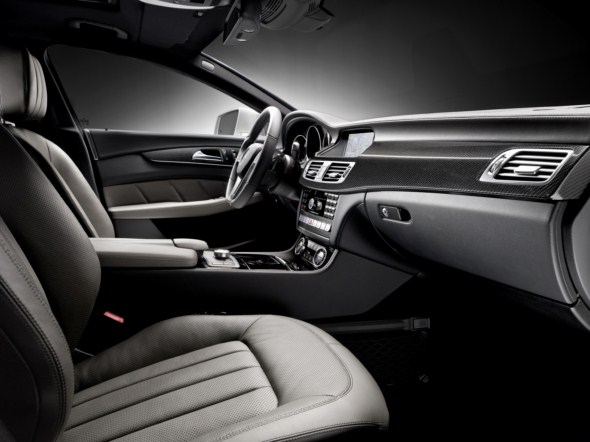
The interior of the CLS is also distinguished by a timeless design which combines straightforward elegance with innovative details and handcrafted perfection. An eye-catching feature is the wrap-around effect of the cockpit: a high line sweeps from the driver’s door over the instrument panel support and across to the front passenger door. The central display has also been integrated harmoniously into the upper part of the instrument panel. At the same time, the downward sweeping side line on the doors continues the dynamic dropping line of the exterior.
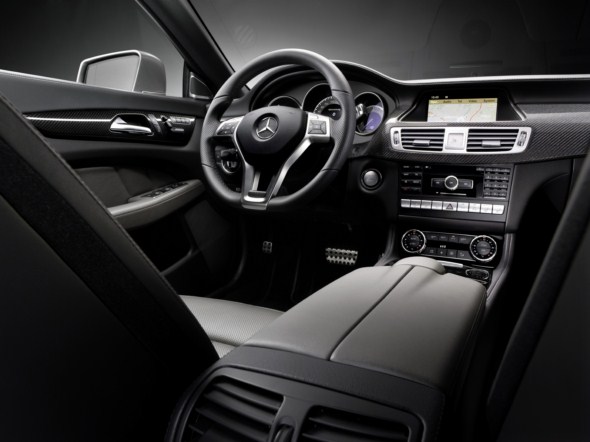
As a design trendsetter, the CLS sets new standards in interiors with its wide variety of individualisation options. Five interior colours, five trim designs and also three qualities of leather are available to choose from. As a result, each CLS is a one-off piece and can be configured individually between warm naturalness and cool modernity.
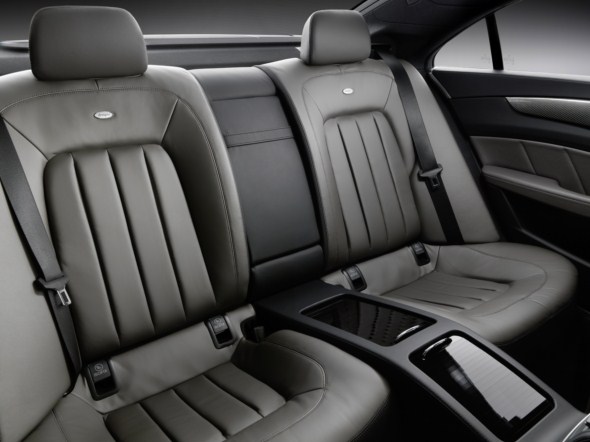
The CLS also lives up to its role as a design icon thanks to the innovative nature of the materials used. These comprise an exciting mixture of satin and high-gloss finishes used on the metal surfaces. Highlights here also include matt galvanised air vents, for example, which form the ideal framework for a high-gloss-trimmed analogue clock.

Handcrafted perfection is reflected in details such as the stitched seat covers or the so-called sewn covering for the dashboard. For the latter, the individual parts of the leather cover are sewn together by hand in a process which takes several hours, after which they are fitted and upholstered with high-quality foam. Prior to this process, the leather is also heated up to preshrink it, so that it will retain its shape even after extreme exposure to direct sunlight.
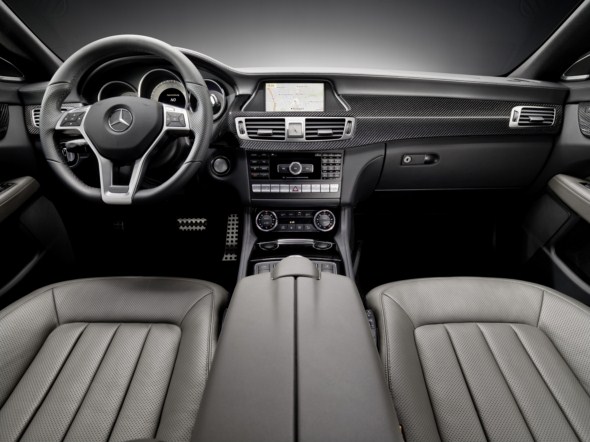
The particularly fine, 1.6 millimetre thick semi-aniline PASSION leather which is used meets the highest standards in terms of both look and feel. Protected by only a light pigmentation, the natural pore structure remains intact and the leather has an especially warm and soft feel to it. Since the natural characteristics also remain visible for the most part, the semi-aniline leather requires a very precise manual selection process.
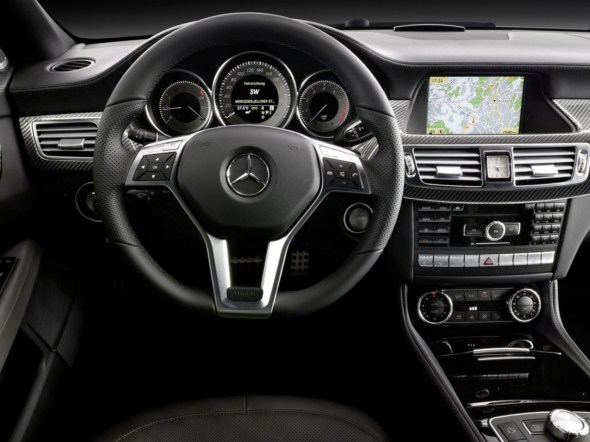
The refined sportiness of the interior of the CLS is further reflected in the generous use of high-quality trim elements. They are located on the instrument panel support of the centre console and on parts of the door linings. Customers can choose between three exclusive types of wood: high-gloss brown burr walnut, high-gloss black ash and satin-finish light-brown poplar. The wood has even been perfectly fitted around difficult contours for a masterful handcrafted finish, and the wood trim has been matched according to grain, as part of an elaborate selection process, to create a harmonised overall impression.

The interior can be given an even more progressive look with the addition of piano lacquer or carbon fibre trim elements. Handcrafted perfection once again plays a prominent role in the production process. Up to seven layers are applied and polished for the piano lacquer trim, for example, until the desired high-gloss finish is achieved.
